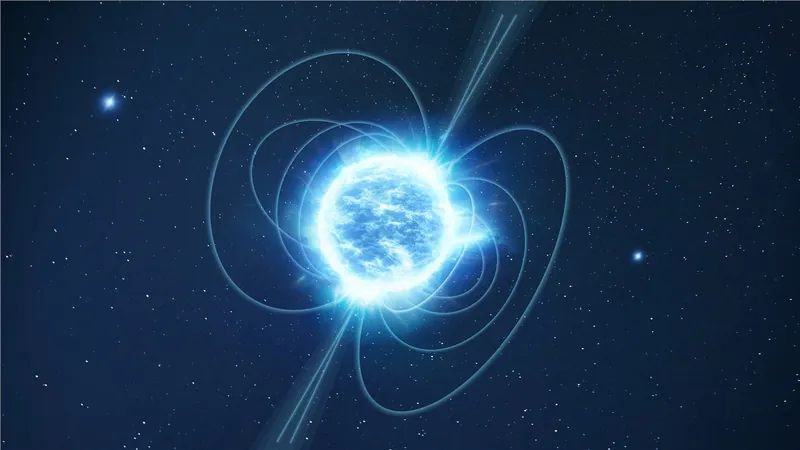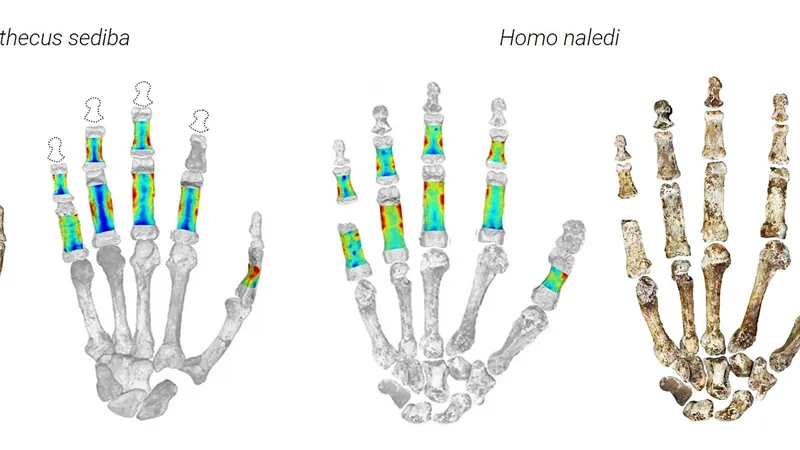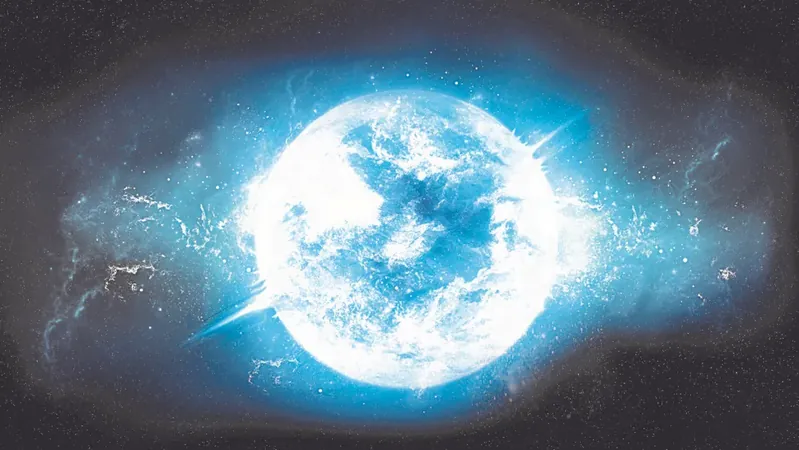
Mystery of the Magnetar: Where Did SGR 0501+4516 Really Come From?
2025-04-16
Author: Daniel
Revolutionary Discovery with Hubble!
In a groundbreaking revelation, researchers utilizing the NASA/ESA Hubble Space Telescope have shifted the narrative surrounding the birth of the enigmatic magnetar SGR 0501+4516. Contrary to previous beliefs that it was born from a nearby supernova, its true origins remain a cosmic mystery. This pivotal finding positions SGR 0501+4516 as the primary candidate within our galaxy for a magnetar that wasn’t formed in a supernova event, thanks to Hubble’s unparalleled sensitivity and support from the European Space Agency's Gaia spacecraft.
The Genesis of SGR 0501+4516
First identified in 2008 by NASA’s Swift Observatory, SGR 0501+4516 emitted fleeting yet powerful gamma-ray bursts from the fringes of the Milky Way. This celestial anomaly is among an exclusive club of roughly 30 known magnetars lurking in our galaxy.
What Makes Magnetars So Unique?
Magnetars are astonishingly dense stellar remnants, representing a specific type of neutron star with unrivaled magnetic fields. They encompass over the Sun's mass compressed into a mere 20 kilometers in diameter, exhibiting extraordinary behaviors including violent X-ray and gamma-ray outbursts, intense magnetic fields, and rapid rotations.
Ashley Chrimes, the lead author of the study published in Astronomy & Astrophysics, noted, "Magnetars are neutron stars, the end stage of massive stars, made entirely of neutrons. Their magnetic fields are billions of times stronger than any magnets we have on Earth."
Why the Supernova Connection?
Traditionally, neutron stars are believed to emerge from spectacular core-collapse supernovae—explosive deaths of stars much larger than our Sun. SGR 0501+4516 was once thought to be located in proximity to the supernova remnant HB9, suggesting a similar birth. However, decade-long observations with Hubble challenged this theory.
By connecting data from Hubble with the Gaia mission’s precise mapping of nearly two billion stars, scientists tracked SGR 0501+4516's faint infrared glow over several years. Despite its apparent closeness to HB9, the analysis revealed its motion didn’t correlate with the supernova's remnants, raising new questions about its past.
A Different Birth Theory?
If SGR 0501+4516 wasn't birthed in a supernova, it either predates its estimated 20,000-year age or it emerged through an alternative mechanism. Potential theories include the merger of two smaller neutron stars or a rare process known as accretion-induced collapse—a phenomenon where a white dwarf, the remains of a Sun-like star, consumes gas from its companion, possibly collapsing into a magnetar.
Andrew Levan from Radboud University suggests, "While the norm leads to a white dwarf explosion, under specific conditions, it may compact into a neutron star. We propose this as a plausible origin for SGR 0501."
Unlocking Cosmic Mysteries!
Currently, SGR 0501+4516 stands as the leading contender for a magnetar that could have emerged from such non-traditional processes. This could illuminate answers to some of the Universe's greatest mysteries, including the origins of fast radio bursts, powerful flashes of radio waves that perplex astronomers.
Experts believe that understanding magnetar formation is critical for explaining high-energy astrophysics and significant cosmic events like gamma-ray bursts and superluminous supernovae. Nanda Rea from the Institute of Space Sciences in Barcelona underscores, "Questions surrounding the birth and development of magnetars are among the most crucial in our understanding of the universe’s dynamic phenomena."
What Lies Ahead?
The research team is gearing up for further Hubble investigations aimed at uncovering the origins of more magnetars within the Milky Way. Each discovery promises to unravel the intriguing processes that govern the birth of these extraordinary celestial objects.





 Brasil (PT)
Brasil (PT)
 Canada (EN)
Canada (EN)
 Chile (ES)
Chile (ES)
 Česko (CS)
Česko (CS)
 대한민국 (KO)
대한민국 (KO)
 España (ES)
España (ES)
 France (FR)
France (FR)
 Hong Kong (EN)
Hong Kong (EN)
 Italia (IT)
Italia (IT)
 日本 (JA)
日本 (JA)
 Magyarország (HU)
Magyarország (HU)
 Norge (NO)
Norge (NO)
 Polska (PL)
Polska (PL)
 Schweiz (DE)
Schweiz (DE)
 Singapore (EN)
Singapore (EN)
 Sverige (SV)
Sverige (SV)
 Suomi (FI)
Suomi (FI)
 Türkiye (TR)
Türkiye (TR)
 الإمارات العربية المتحدة (AR)
الإمارات العربية المتحدة (AR)